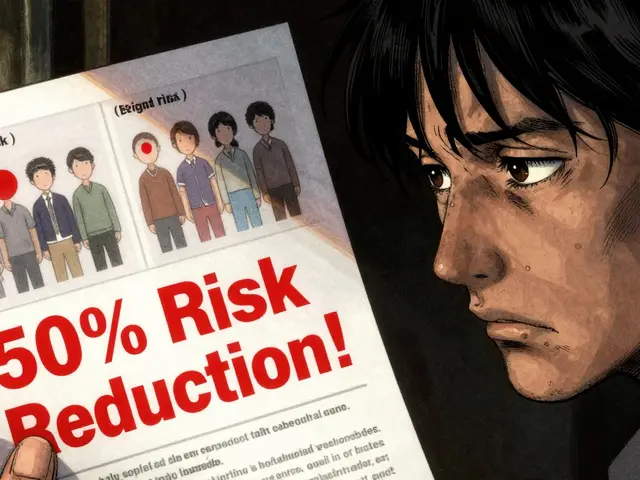
Hepatic Encephalopathy is a neuropsychiatric syndrome that occurs when a diseased liver can’t clear toxins, especially ammonia, from the bloodstream. The condition ranges from subtle concentration problems to coma, and diet plays a surprisingly powerful role in keeping the brain clear.
Why Nutrition Matters in Hepatic Encephalopathy
The liver’s job is to detoxify ammonia, a by‑product of protein digestion. When liver function drops, ammonia builds up, crosses the blood‑brain barrier, and disrupts neurotransmission. Studies from leading hepatology centres show that even modest dietary tweaks can lower blood ammonia by 15‑30% and reduce hospital admissions.
Core Dietary Concepts
Three pillars drive nutritional therapy:
- Controlling protein intake to limit ammonia production.
- Providing branched‑chain amino acids (BCAAs) that are metabolised outside the liver.
- Supporting gut health with probiotics and micronutrients such as zinc.
Each pillar interacts with the others, creating a network of effects that keep ammonia levels in check.
Protein Management: Not a Simple Cut‑Back
Older protocols advocated a strict low‑protein diet (≤0.5g/kg/day). Modern evidence, however, shows that overly restricting protein worsens malnutrition and sarcopenia, both of which worsen encephalopathy. The current consensus is a moderate protein diet of 1.0-1.2g/kg/day, emphasizing high‑quality sources.
Key protein sources include:
- Fish and poultry - lower in aromatic amino acids that generate ammonia.
- Plant‑based proteins - legumes, tofu, and tempeh, especially when combined with BCAA supplements.
- Egg whites - provide essential amino acids with minimal nitrogen load.
Patients with recurrent episodes may still need a temporary low‑protein phase, but it should be paired with BCAA enrichment to preserve muscle mass.
Branched‑Chain Amino Acids (BCAAs): A Targeted Substitute
BCAAs (leucine, isoleucine, valine) are metabolised primarily in skeletal muscle, bypassing the liver. Clinical trials from 2022‑2024 report that a daily BCAA dose of 0.2g/kg improves mental alertness and reduces serum ammonia by up to 12% when added to a moderate protein regimen.
Typical BCAA formulations deliver 12g per serving, split into two doses with meals. Patients should choose products free of added sugars or artificial sweeteners, as these can fuel gut dysbiosis.
Gut Microbiota, Probiotics, and Lactose‑Free Choices
The gut generates a substantial portion of circulating ammonia through bacterial urease activity. Shifting the microbial balance with probiotics can cut that production.
Evidence points to multi‑strain preparations containing Lactobacillus, Bifidobacterium, and Saccharomyces boulardii. A 2023 double‑blind study found a 10% drop in ammonia after eight weeks of daily probiotic use.
Some patients also benefit from a lactose‑free diet. Lactose malabsorption can increase colonic fermentation, producing additional nitrogenous waste. Switching to lactose‑free dairy or fortified plant milks helps keep stool gas low and ammonia production down.
Zinc Supplementation: The Unsung Hero
Zinc is a co‑factor for the enzyme ornithine transcarbamylase, which helps convert ammonia into urea. Cirrhotic patients often have zinc deficiency, worsening encephalopathy.
Guidelines suggest 50mg of elemental zinc daily, divided into two doses with meals. Monitoring serum zinc quarterly ensures the level stays between 70-120µg/dL, the range associated with optimal ammonia clearance.

Sodium Restriction and Fluid Management
Excess sodium promotes ascites and peripheral edema, which in turn can impair hepatic perfusion and worsen toxin clearance. A daily sodium limit of 2g (≈85mmol) is widely recommended.
Practical steps include using herbs and spices for flavor, reading food labels for hidden salt, and choosing fresh over processed foods. Fluid restriction is generally not needed unless hyponatremia is present.
Meal Timing and Portioning: Small, Frequent Meals
Large meals cause a spike in post‑prandial ammonia. Instead, aim for five to six small meals throughout the day, each providing 200-300kcal and balanced macronutrients. This steady feeding pattern keeps blood ammonia stable and supports muscle preservation.
Comparison of Dietary Approaches
| Approach | Protein (g/kg/day) | Ammonia Impact | Patient Tolerance |
|---|---|---|---|
| Traditional Low‑Protein | ≤0.5 | -15% to -25% (short‑term) | Poor - risk of malnutrition |
| Moderate Protein + BCAAs | 1.0-1.2 | -10% to -20% (sustained) | Good - maintains muscle mass |
| High‑Protein + Probiotics | ≥1.5 | ±0% (neutral) | Variable - depends on gut health |
Putting It All Together: A Sample One‑Day Menu
- Breakfast (8am): Lactose‑free oatmeal with a scoop of BCAA powder, a handful of blueberries, and a boiled egg white.
- Mid‑morning snack (10:30am): Low‑sodium rice cakes topped with avocado and a probiotic‑rich kefir drink.
- Lunch (1pm): Grilled salmon (150g), quinoa salad with chopped spinach, cherry tomatoes, and a drizzle of olive oil.
- Afternoon snack (4pm): A small apple and 30g of mixed nuts (unsalted).
- Dinner (7pm): Stir‑fried tofu with broccoli, bell peppers, ginger, and a splash of low‑sodium soy sauce; serve with brown rice.
- Evening snack (9pm): Greek‑style lactose‑free yogurt with a teaspoon of zinc‑fortified honey.
This plan delivers ~1.1g/kg protein, 12g BCAAs, ~50mg zinc, and stays under 2g sodium, while spacing meals to avoid ammonia spikes.
Monitoring Progress and When to Seek Help
Patients should track mental clarity, sleep quality, and any asterixis (hand‑flapping) episodes. Routine labs every 3‑4weeks-checking serum ammonia, zinc, and albumin-provide objective data. If symptoms worsen despite dietary compliance, it may signal the need for medical interventions such as lactulose, rifaximin, or evaluation for a TIPS procedure.
Next Steps for Readers
Now that you know the key nutritional levers, consider these actions:
- Schedule a dietitian appointment specialized in liver disease.
- Start a food‑journal to log meals, portion sizes, and symptom changes.
- Choose a probiotic with documented strains and a reputable BCAA supplement.
- Set quarterly labs for ammonia and zinc; adjust intake based on results.
These steps turn knowledge into measurable improvement.

Frequently Asked Questions
Can I eat meat if I have hepatic encephalopathy?
Yes, but choose lean cuts like chicken breast or fish and keep total protein around 1.0-1.2g per kilogram of body weight. Pair meat with BCAA supplements to protect muscle while limiting ammonia production.
Do I really need to avoid all dairy?
Not all dairy is forbidden. Lactose‑free options such as lactose‑free milk, fortified soy milk, or Greek‑style lactose‑free yogurt provide calcium and protein without the fermentation‑derived ammonia spikes seen with regular milk.
How much zinc is safe to take daily?
The typical therapeutic dose is 50mg of elemental zinc split into two doses. Exceeding 100mg per day can cause copper deficiency, so keep within the recommended range and have serum levels checked every few months.
Are probiotics really effective for brain symptoms?
Clinical trials show that multi‑strain probiotics can lower blood ammonia by roughly 10% and modestly improve attention scores. They work best when combined with a balanced protein plan and BCAA supplementation.
What’s the best way to limit sodium without making food bland?
Use herbs (rosemary, thyme), spices (cumin, paprika), citrus zest, and vinegar to add flavor. Fresh vegetables and home‑cooked sauces allow you to control salt content. Reading labels for “no added salt” or “low‑sodium” versions of canned goods also helps.







20 Comments
I've been working with a few patients who have hepatic encephalopathy and tweaking their diet makes a real difference. Small, frequent meals keep ammonia from spiking after a big dinner. Adding a BCAA supplement between lunch and dinner helped maintain muscle mass without overloading the liver. Don't forget to watch the sodium – herbs and citrus can flavor food just fine. Keep a food journal; it gives both the patient and the dietitian solid data to adjust the plan.
The whole “just follow the guidelines” vibe ignores how messy real life can be. People end up cutting protein too hard and then suffer malnutrition. A balanced approach with quality protein is non‑negotiable. Anything less is a shortcut that hurts more than it helps.
Totally agree with the food‑journal tip its a gamechanger for tracking ammonia trends also the probiotic suggestion adds gut support great combo
While the presented protocol is thorough, one must ponder whether the emphasis on zinc overshadows other micronutrients such as magnesium, which recent studies suggest may also modulate hepatic encephalopathy pathways. Moreover, the insistence on lactose‑free dairy could be contested given that some patients tolerate lactase supplements without issue. An overly rigid adherence risks alienating those who thrive on traditional dairy sources. In sum, the recommendations, though evidence‑based, merit a nuanced, patient‑centred adaptation.
In the management of hepatic encephalopathy, nutrition occupies a central, yet often underappreciated, role. The liver’s inability to convert ammonia into urea creates a cascade of neurotoxic effects that can be mitigated by precise dietary adjustments. First, the protein intake should hover around 1.0‑1.2 g per kilogram of body weight, favoring lean animal sources such as poultry and fish, which are lower in aromatic amino acids that generate ammonia. Second, supplementing with branched‑chain amino acids supplies the skeletal muscle with substrates that bypass hepatic metabolism, thereby reducing systemic ammonia levels. Clinical trials conducted between 2022 and 2024 consistently demonstrate a 10‑12 % reduction in serum ammonia when BCAAs are added to a moderate protein regimen. Third, the gut microbiota contributes significantly to ammonia production; selecting a probiotic containing Lactobacillus, Bifidobacterium, and Saccharomyces boulardii can shift microbial composition toward less urease activity. Fourth, zinc serves as a crucial co‑factor for the urea cycle enzyme ornithine transcarbamylase, and supplementation of 50 mg elemental zinc daily restores enzyme efficiency in many cirrhotic patients. Fifth, sodium restriction to approximately 2 g per day helps prevent ascites, which indirectly supports hepatic perfusion and toxin clearance. Sixth, distributing calories across five to six small meals stabilizes post‑prandial ammonia spikes that are typical after large meals. Seventh, avoiding lactose when malabsorption is present curtails colonic fermentation and subsequent nitrogenous waste generation. Eighth, consistent hydration without forced fluid restriction maintains renal clearance of toxins unless hyponatremia dictates otherwise. Ninth, regular monitoring of ammonia, zinc, and albumin levels every three to four weeks offers objective feedback for dietary fine‑tuning. Tenth, collaboration with a liver‑specialized dietitian ensures that macronutrient ratios are personalized and that micronutrient deficiencies are promptly addressed. Eleventh, mindful preparation techniques, such as steaming rather than frying, preserve nutrient integrity while reducing added sodium. Twelfth, patients should be educated on reading food labels for hidden salts and sugars that could exacerbate gut dysbiosis. Thirteenth, incorporating antioxidant‑rich foods may protect neuronal tissue from oxidative stress associated with chronic ammonia exposure. Fourteenth, any dietary plan should be flexible enough to accommodate cultural preferences, thereby enhancing adherence. Finally, the integration of these nutritional strategies creates a synergistic effect that can markedly improve cognitive function and reduce hospitalizations for hepatic encephalopathy patients.
The mainstream recommendations are fine, but let’s not forget that many of these studies are funded by supplement manufacturers. You’ll see a push for BCAAs and zinc because the industry wants to sell more. If you’re looking for a free solution, focus on whole foods and cut the processed crap rather than buying overpriced powders. Remember, a healthy gut does most of the heavy lifting without a pricey probiotic label.
One could argue that the very act of quantifying ammonia is an illusion, a mirage in a desert of metabolic chaos. Yet the data insists that each bite is a command to the liver’s failing orchestra. By aligning our meals with the rhythm of muscle metabolism, we compose a silent hymn that quiets the neurotoxic crescendo. So let us not shy away from the numbers; they are our compass in this storm.
They don’t tell you that the pharmaceutical companies are behind the push for probiotic pills. The real fix is to eat fermented foods that haven’t been tampered with in a lab. Also, the salt industry lobbies to keep sodium levels high in processed foods, which only makes ascites worse. Trust your gut, literally, and stay skeptical of “clinical trials” that are sponsored by big pharma.
Hey folks, just wanted to share that I’ve been coaching a group of patients through these dietary changes and the results have been nothing short of inspiring. We start every week with a quick check‑in, outline the meal plan, and then dive into cooking demos that show how to flavor dishes without salt. The biggest breakthrough usually comes when someone realizes they can keep their protein intake steady while still feeling full and satisfied. We also track ammonia levels together, so every small drop feels like a victory lap. Remember, consistency beats perfection – even if you slip up one day, get back on track the next. Keep the momentum going, celebrate every improvement, and never underestimate the power of a supportive community.
Thanks for the tip!
It’s disheartening to see people ignore the solid evidence on sodium restriction and keep loading their meals with hidden salt. The health system bears the cost when patients neglect these simple, proven steps. We owe it to ourselves and to the community to be vigilant about reading labels and choosing fresh over processed. Let’s hold each other accountable and push for better education.
Love the community vibe you described it reminds me of how collective effort can outpace solo attempts. The cooking demos sound like a great way to demystify low‑sodium seasoning. Also, pairing protein with BCAAs during those demos would showcase the science in action. Keep the momentum alive and maybe share some video snippets for those who can’t attend physically.
Everyone seems to think that just tossing a probiotic capsule solves the gut problem, but the reality is way more intricate. Strain specificity matters – you need Lactobacillus acidophilus plus Bifidobacterium longum, not just any generic blend. Also, timing matters; taking it with meals can blunt its efficacy. And don’t forget that excessive zinc can impair copper absorption, leading to anemia. So read the fine print and tailor the regimen.
Great points all around 😊 Nutrition truly is a team sport, and every small tweak can shift the balance. Herbs, spices, and citrus zest are lifesavers for flavor without sodium. 🌿 Remember to stay hydrated and keep an eye on ammonia trends. 👍 Keep sharing these wins!
i think the whole low protein fear is overblown u can still get enough nutrients. just make sure u pick lean meats and veggies. also dont forget the bcaas lol they help a lot. stay positive!
Interesting viewpoint the gut really does play a big role in ammonia production but we need solid evidence not just speculation keep an eye on studies and adjust diet accordingly
Have you ever considered how cultural food traditions can be adapted to meet these guidelines? Many Asian cuisines already emphasize fish and soy, which fit nicely into the moderate protein model. Pairing those with local fermented vegetables can boost probiotic intake naturally. It’s a wonderful way to respect heritage while supporting liver health. Let’s explore recipes together!
Stay hopeful friends the brain can recover a lot when we get the diet right. Small changes add up and before you know it those confusing moments start to clear. Keep logging meals and celebrate each drop in ammonia. You’ve got this!
The push for BCAA supplements feels like a cash grab by big pharma. Real improvement comes from whole foods and proper portioning. Don’t let marketing dictate your health choices.
While it’s true some companies profit off supplements, the science behind BCAAs is solid and many patients benefit. It’s all about balanced use, not blind reliance. Evaluate each option on its merits.